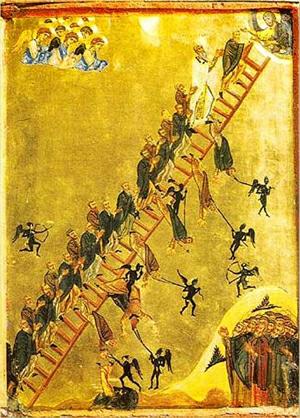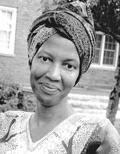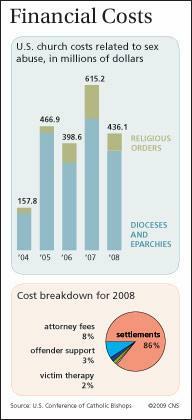 Or would-be saints, perhaps “will-be” saints, in the case of Karl Rahner, who died 25 years ago today, and Sr. Thea Bowman, the African-American Franciscan, who helped to found the Institute of Black Catholic Studies at Xavier University in New Orleans. At the National Catholic Reporter, Fr. Richard McBrien weaves together the stories of the three:
Or would-be saints, perhaps “will-be” saints, in the case of Karl Rahner, who died 25 years ago today, and Sr. Thea Bowman, the African-American Franciscan, who helped to found the Institute of Black Catholic Studies at Xavier University in New Orleans. At the National Catholic Reporter, Fr. Richard McBrien weaves together the stories of the three:
John Climacus (ca. 570-ca. 649) had been married early in life but became a monk after his wife’s death. After living in community for a while, he took up life as a hermit. His only contact with others would occur at Mass with other hermits on weekends. It was while John was living in solitude that he wrote the work that gave him his name, Climacus, which in Latin means “ladder.” The work was titled The Ladder to Paradise. [Icon of the Ladder of Divine Ascent in St. Catherine’s Monastery in the Sinai desert at right.] It was a volume on monastic spirituality, cataloguing the virtues and vices of monastic life, of both the communal and eremetical type. He held up apatheia (Greek, “passive disinterestedness”) as the ideal virtue, because it represented a complete mastery over one’s feelings and emotions.
First, Rahner, the great German theologian who was a colleague of Ratzinger’s, though they grew increasingly estranged in the post-Vatican II period, to the point that Ratzinger declared they lived “on different planets.” Many would say Rahner was a bit too Earth-bound in his theology, despite his notoriously difficult style. At dotCommonweal, Fr. Joseph Komonchak has a fine appreciation of Rahner that deflates that view a good bit:
I don’t know of any theologian who more than Rahner stressed the transcendence of the divine Mystery to all our feeble efforts to understand it. He embodied the Augustinian adage: “Si comprehendis, non est Deus” (If you can grasp it, it’s not God.) The incomprehensibility of God, even after his self-revelation in Jesus Christ-Mystery remaining Mystery, not because of a lack of intelligibility, but because of an excess of intelligibility, nowhere greater than in the mystery we will be celebrating next week, when the mystery that is excess of meaning encounters and overcomes the utter lack of meaning that is sin.
Fr. Komonchak, who knows the virtue of a good anecdote as much as any great writer, also concludes with this:
A story: Johannes Quasten, great patrologist and professor at Catholic University, used to visit Mrs. Rahner, mother of Hugo and Karl, when he’d return to Germany for a visit in the summer. (She lived to be over 100, I have heard.) On one occasion when she was well on in years, Fr. Quasten commented on something Karl had said about some Church-controversy in Germany. Mrs. Rahner replied: “Oh, Fr. Quasten, don’t pay any attention to Karl. He always exaggerates!” Nice to know that Karl Rahner had a mother, too.
 As for Thea Bowman (pictured at left), McBrien concludes:
As for Thea Bowman (pictured at left), McBrien concludes:
In 1984, the same year that Fr. Rahner died, Sr. Thea learned that she had breast cancer. Nevertheless she continued her speaking and her travels, and in the process contributed to the ongoing transformation of the Catholic church in the United States.
Toward the end of her life, she had become bald from her chemotherapy treatments and was confined to a wheelchair. Her prayer in her remaining years was: “Lord, let me live until I die,” that is, “to live, love, and serve fully until death comes.”
“I don’t make sense of suffering,” she once said, “I try to make sense of life.”
Only John Climacus is an “official” saint, but canonization is really only a final recognition of widely acknowledged spiritual reality. As McBrien says, “Saints are primarily exemplars, not intercessors. These three fit that profile very well.”

